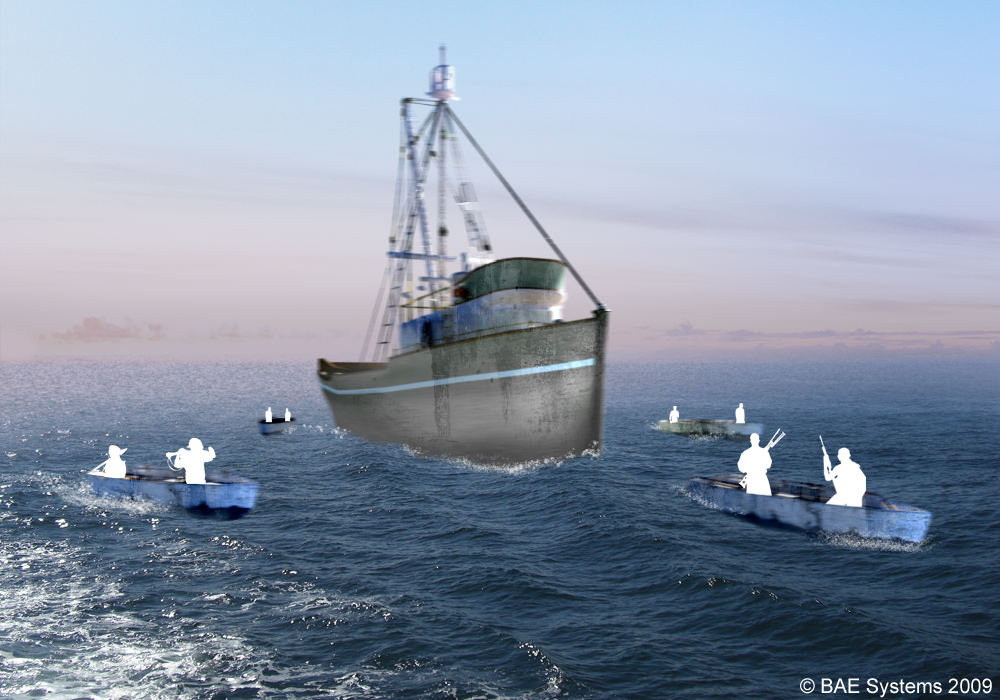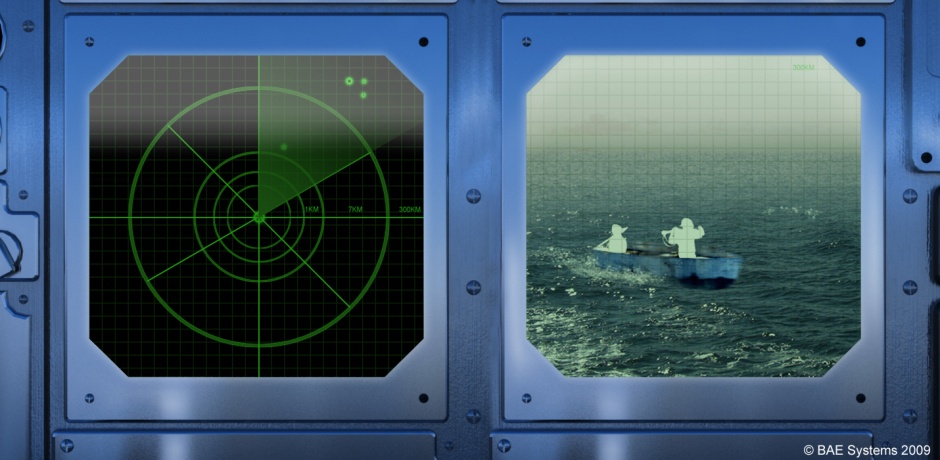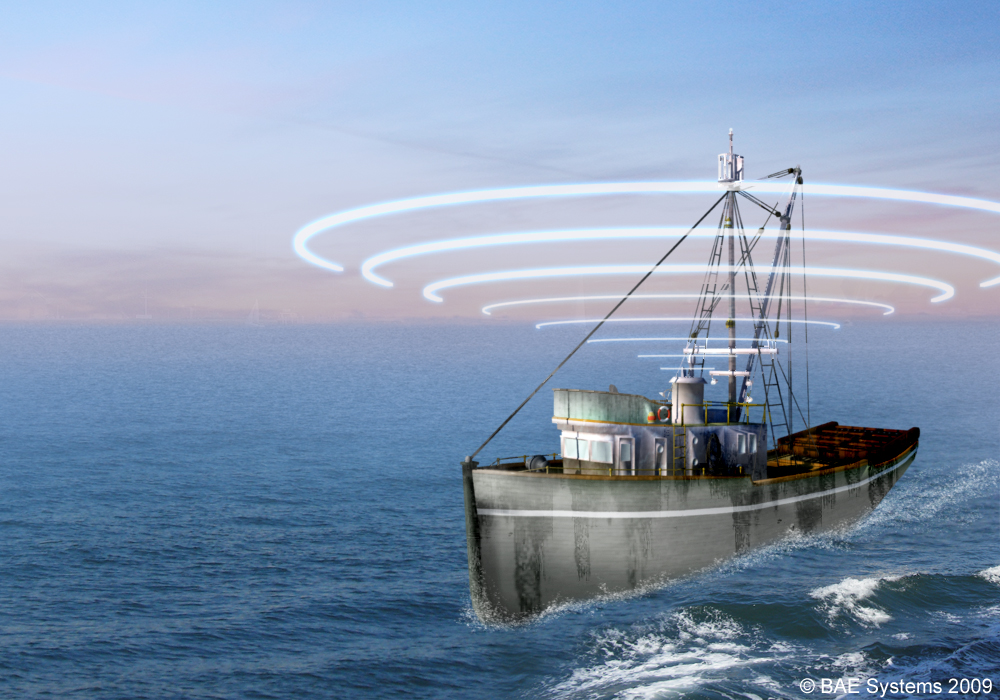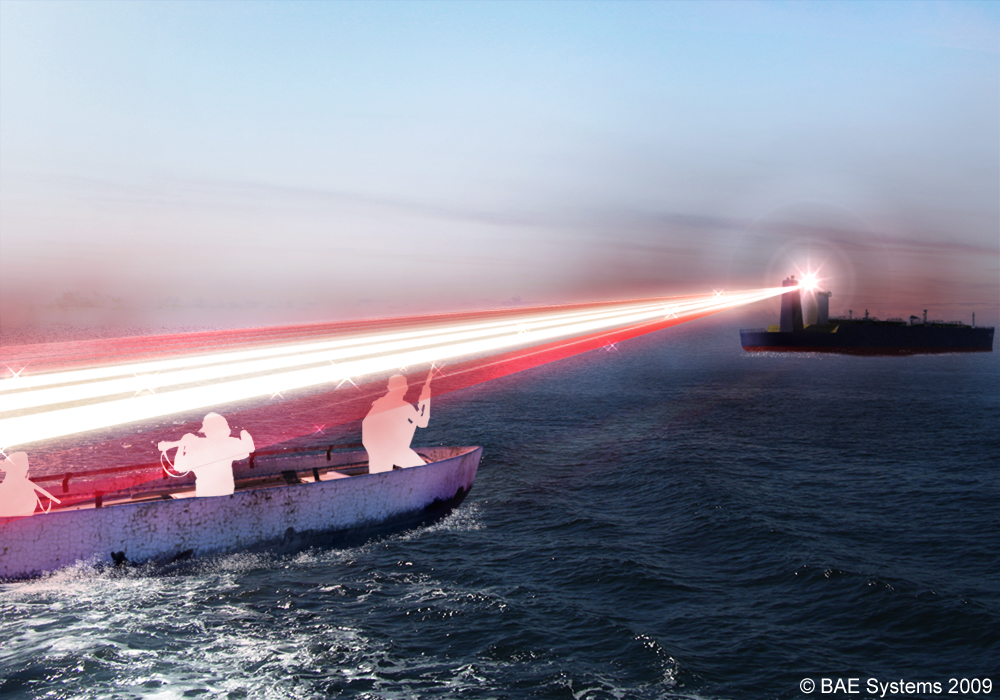Forget the perils of the Cape Horn or the storm-lashed waters of the southern oceans; a journey through the relatively calm waters of the Gulf of Aden is one of the most nerve-racking and treacherous voyages a mariner can make.

Linking the Arabian Sea with the Red Sea, this waterway is used by about 36,000 ships a year, between them carrying almost a third of the world’s containerised cargo and nearly half of the world’s bulk cargo.
Crews travelling this route have no alternative, but as they do so they turn out the lights, glance nervously out to sea and pray they do not fall victim to the gangs of Somalian pirates prowling the busy waters.
The threat of piracy off Somalia has been growing since the country was plunged into civil war in the 1990s. In recent years, the number of attacks has increased at an alarming rate. In 2008, there were 42 successful hijackings and pirates reaped around $50m (£30m) worth of ransoms.
By mid-April this year, pirates had already seized 21 vessels.
So far, most incidents have been settled without loss of life by ships’ insurers. But as the pirates’ ambitions grow, ransom demands escalate and fears emerge over links between piracy and terrorism, shipowners and governments are regarding the situation with mounting unease.
Spotting a huge market opportunity, a number of companies are developing technology that could help shipowners counter the threat of piracy. Many of these ideas come from the world of defence, where technologies originally developed for naval applications are directly relevant to counter-piracy operations.
Leading the field is BAE Systems, which is working on a suite of imaging and processing technologies that could provide an advanced warning of a pirate attack and give vessels a chance to take evasive action.

BAE is carrying out a feasibility study with shipowners, government agencies and navies, and hopes to conduct sea trials next year.
Bryan Hore, who is leading the project, said the system is being developed with a particular mode of operation in mind. ‘[Pirates] tend to attack from dawn or dusk, at a slight angle, from behind onboard skiffs. Armed with AK47s, a rifle and an RPG [rocket-propelled grenade], they aim a few warning shots at the citadel, then use ropes and ladders with hooks on to climb on board,’ he said. It is a pretty one-sided affair, added Hore. Once under attack, a crew is rapidly scared into submission.
Identifying a threat in the crowded waters of the Gulf of Aden is no simple task. Not only is it one of the busiest shipping lanes in the world, but it is also full of small fishing vessels and, according to Hore, it is not easy to tell the difference between a pirate and a fisherman. Both use small boats and typically carry guns. A system that can discriminate between the two must be intelligent.
The first element is a high-frequency surface wave (HFSW) radar. Currently used for border and coastal surveillance, these systems are able to see beyond the horizon and could be configured to look 360° around the ship. For spotting smaller pirate vessels, this has big advantages over a ship’s conventional navigation radar.

The gathered data will be analysed by software that will compare a vessel’s movements to acknowledged patterns of behaviour and identify suspicious activity. ‘Pirates tend to sit around in clusters of three or four boats, maybe with one larger vessel,’ said Hore. ‘They tend to stay out for a long time around a certain area.’
BAE is also investigating the feasibility of a panoramic aerial surveillance system (PASS) combining a video camera, an infrared (IR) camera and a navigation radar in one unit. ‘If the video processing thinks it picks up an object, the IR picks up an object in the same area and so does the nav radar, you’re pretty sure you’ve got an object,’ he added. The picture of what is going on is enhanced by a ship surveillance system called PRISM that picks up electronic emissions from other ships and detects whether a ship is using a radar to track down likely targets.
If the data from all of these systems flags up a suspicious vessel, a high-powered, high-definition camera could then be used to look more closely at the boats in question.
What happens next, however, is subject to debate. Some countries, such as China, urge their shipowners to carry arms and go on the counter-attack. Most others believe that this is the point at which the naval ships patrolling the Gulf of Aden should step in.
‘Putting large weapons on board commercial vessels is not a great idea,’ said Hore. ‘The legal implications for the crew are unknown and there’s also an issue of the pirates getting hold of any technology you put on these things. The priority is on detection and discrimination. If suspicions are raised early enough, nine times out of 10 they can stop the pirates boarding. Pirates can’t get aboard very easily. They will turn away, create a wake and little vessels can’t get close.’

While early detection could certainly give ships an advantage, it is not the only technology under consideration.
Speaking at an event organised by the Institute of Marine Engineering, Science & Technology (IMAREST), Qinetiq engineer Paul Horstmann outlined how some of the protective measures deployed by naval vessels could help commercial shipping resist attack. Commissioned by the Oil Companies International Marine Forum (OCIMF) to examine the vulnerability of a commercial ship’s bridge structure to attack, Horstmann’s team used a ship design tool called SURVIVE to carry out simulations looking at how tankers equipped with different types of armour responded to attacks with AK47 and RPG rounds.
The results were unsurprising: armour used in defence to repel machine-gun fire and RPG attacks is effective wherever you put it and the crew of a heavily armoured commercial tanker would certainly be less vulnerable than they are currently.
Horstmann believes that the technology could be deployed rapidly and relatively inexpensively. ‘An RPG 7 will go through the best part of 300mm of steel, so the way to defeat that kind of threat is with bar-slatted armour, which works by messing with the fusing mechanism of the RPG or an RPG net that is 10–20 per cent of the weight but equally effective. This is easily the kind of thing that could be hung around the bridge to protect it,’ he said.
Other technologies, from laser dazzlers to very loud acoustic devices, focus on preventing pirates from approaching a ship.
The feeling at the conference seemed to be that as long as insurers continue to stump up, shipowners will be reluctant to invest in technology. However, if or when that changes — and many believe such a change is inevitable — the defence industry will be ready and willing to help.
Timeline - pirate attacks off the coast of Somalia has increased dramatically
- April 08 Luxury yacht Le Ponant seized. Boat and crew released following $2m ransom payout. French forces capture six pirates and recover some money
- September 08 Pirates board and hijack MV Faina. Ship and crew released four months later when ransom payment is parachuted into the water
- November 08 Hijack of Saudi oil tanker Sirius Star causes price of oil to jump more than $1 a barrel. Ship and crew freed after $3m ransom payment
- April 09 Container ship Maersk Alabama becomes first US victim of piracy for 200 years. Crew and ship freed days later when US Navy Seal snipers kill three pirates
- April 09 Greek-owned bulk carrier MV Irene seized in Gulf of Aden. Ship and 21 crew released after hijackers receive $2m ransom payment




Collaboration to address viable solutions for VAWG database
<blockquote>address the lack of standardisation, coordination, and collaboration of gender disaggregated data intelligence across various regions,...